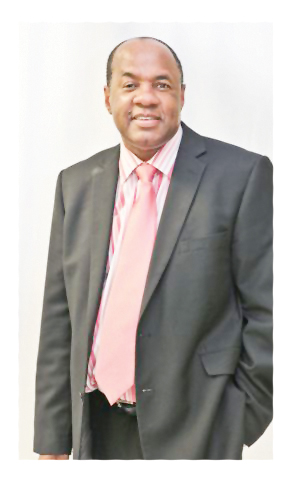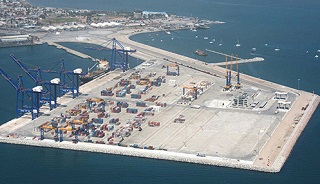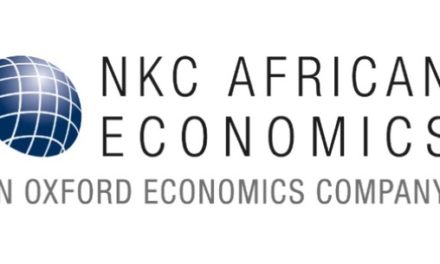
Economist Business Leader Profile
Johannes !GawaxabJohannes !Gawaxab Managing Director Old Mutual Africa
Authenticity is a key element of Johannes !Gawaxab’s engagement with peers, subordinates and superiors. “It is important that I be myself” he says. “As you know, I come from a very humble background, but I am not defined by nor am I a mirror of other people’s projections – You need to be who you are!”
During his career, Johannes !Gawaxab worked across several industries, jurisdictions and geographies, empowering him with an understanding of different approaches to business management styles. It instilled in him an appreciation for the often disjunct cultures expressed in similar industries but spread across many countries, or conversely, for different industries operating in the same country.
Driving home the importance of his cross-industry as well as cross-geography exposure, he says his appreciation for the subtle differences in business culture, and the impact it has on day to day operations, prepared him for his role as leader of OM African Operations, in combination with remaining at the helm of OM Namibia.
Johannes started at Old Mutual in 1998 as CEO of Old Mutual Asset Management. Growing the extent as well as the depth of assets under management took him to the next logical rung, that of MD of Old Mutual Namibia, in 2006. Here the activity was more intense and he worked much closer to the fire of daily sales, targets and competition.
In March 2006, with the consolidation of Old Mutual’s existing interests outside South Africa, a new division was formed, Old Mutual Africa Operations, and Johannes became its first MD.
In this capacity, he is also responsible for the strategic direction and success of Old Mutual in Kenya, Zimbabwe, Swaziland, Malawi and Nigeria.
However, he still continued in his position as MD of Old Mutual Namibia where the four CEO’s of Retail, Corporate, Asset Management and Operations, report to him on local matters. For the African operation, the MDs of the five other countries report to him, each on his own operations.
He manages close to 4,000 employees and close to N$50 billion of assets under management.
It seems hard to believe that one person can manage one of Namibia’s biggest companies in general, certainly its biggest life insurer and asset manager, while at the same time, drive the demanding job of growing the marque in other territories.
“I travel more than 150,000 kilometres in a year”, he quips. “I meet with the MDs reporting to me on a monthly basis. This meeting is digital. Then the group of five MDs meet every quarter in one of the countries and the Exco also meets quarterly in South Africa. “I am physically in each reporting country, six times a year”, he says.
Old Mutual Namibia has recently completed its annual Business Plan Cycle. This is a rigorous process that starts in June and only concludes in September. It entails an analysis, almost at forensic level, of current market conditions, constraints and opportunities. From this dissection, a strategic model develops which becomes the operational framework for the next year. Each of his reporting country MDs has to compile a similar model which is then incorporated into the broader strategic framework for Old Mutual African Operations.
What his exposure in multiple territories has taught him is that many quasi-cultural aspects are unique but that there is a clearly definable spread of products and field of operations, that are the same, or similar for all territories. This has lead to standardisation in terms of products and supportive operations. “Responding to market dynamics is a country-specific response but products offered are standardised” he says explaining the mix between quantifiable viz a viz unpredictable elements of managing a territory, or penetrating a new market.
But the biggest challenge in his career still lies ahead. Earlier this year, Old Mutual established a presence in the Nigerian market and during the course of next year it plans to expand further into West Africa and East Africa. Pushing the life insurer into these market depends on the ability of Johannes and his team to analyse the market dynamics correctly. But the initiative is supported by concepts developed during the formalisation of the Old Mutual Business Plan Cycle. Pointing out the similarities, Johannes says they use what is called internally the “Business in a Box” model which took six months to developed. This hinges on the replication and re-usability of insurance products and it offers standardised products and standardised processes. The actual point of entry is then facilitated through partial acquisition of an established commercial entity that already operates in the target territory.
Using Nigeria as an example, Johannes says Old Mutual acquired a life company and entered into an agreement with Ecobank which gave them access to a branch network of more than 600 points of trading. This immediately opened a marketing venue, on the back of which the life insurer followed with its own products, marketed by dedicated staff. Administrative and statutory input like back-office and underwriting are provided by Old Mutual Africa, but operations are localised. Using this same model, he intends to expand the Old Mutual footprint, country by country. This will be his responsibility for at least the next five years.
Unpacking the complexities of his current responsibilities, Johannes says Stakeholder Engagement has become a crucial pivot for the operations of Old Mutual in all the countries where it is active. Citing the Namibian example, he sketches the difficulty of maintaining a balance between the competing interests of different stakeholder groups. “You have the expectations of shareholders which you have to balance with the expectations of your employees and you have to consider society, government, unions, and similar interest groups.”
Johannes concluded by observing that his job is to shift performance, inspire people and to engage key stakeholders. “Any significant change requires the disruption of the status quo. You can’t win and create a sustainable transformation by maintaining things as they are.”















































